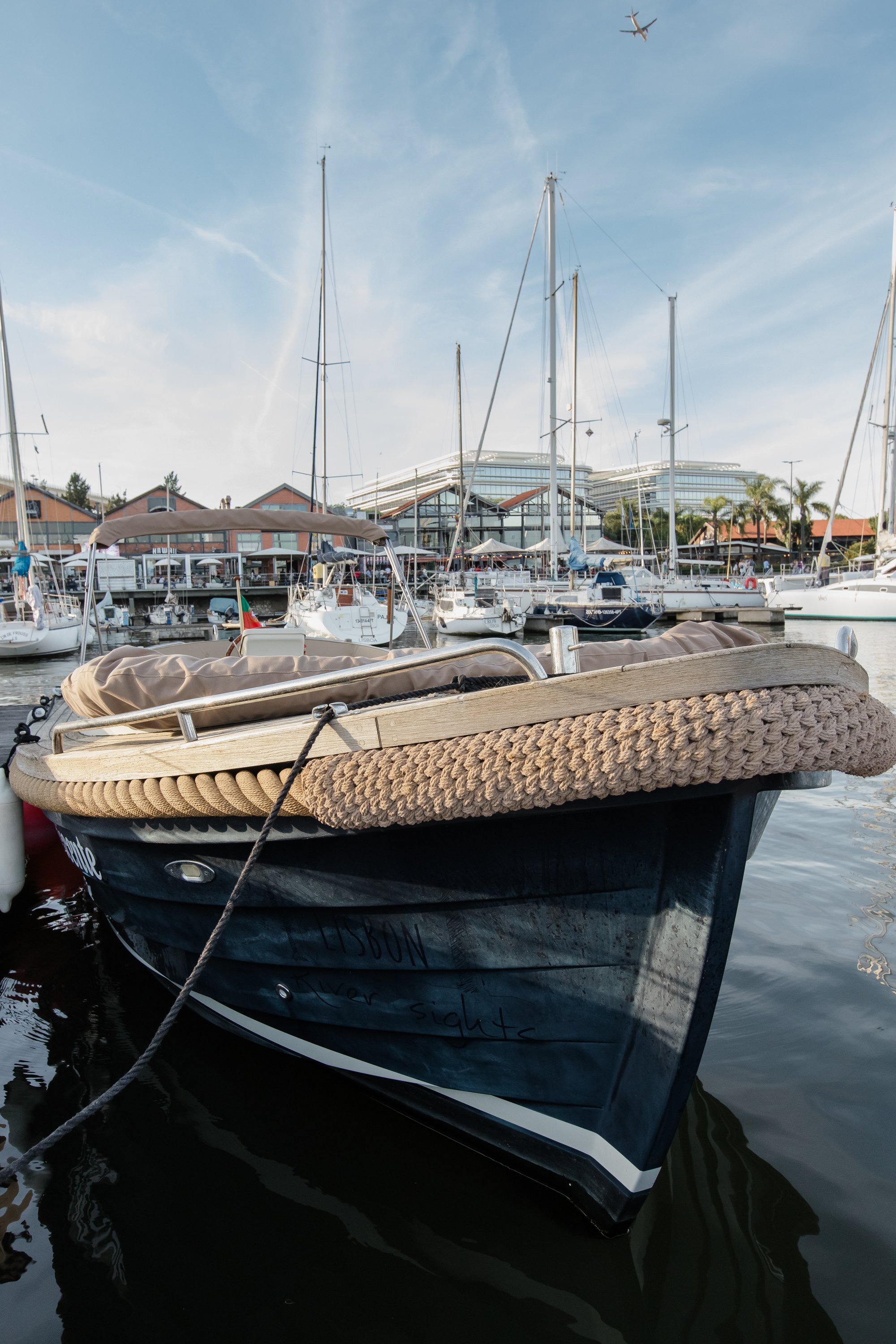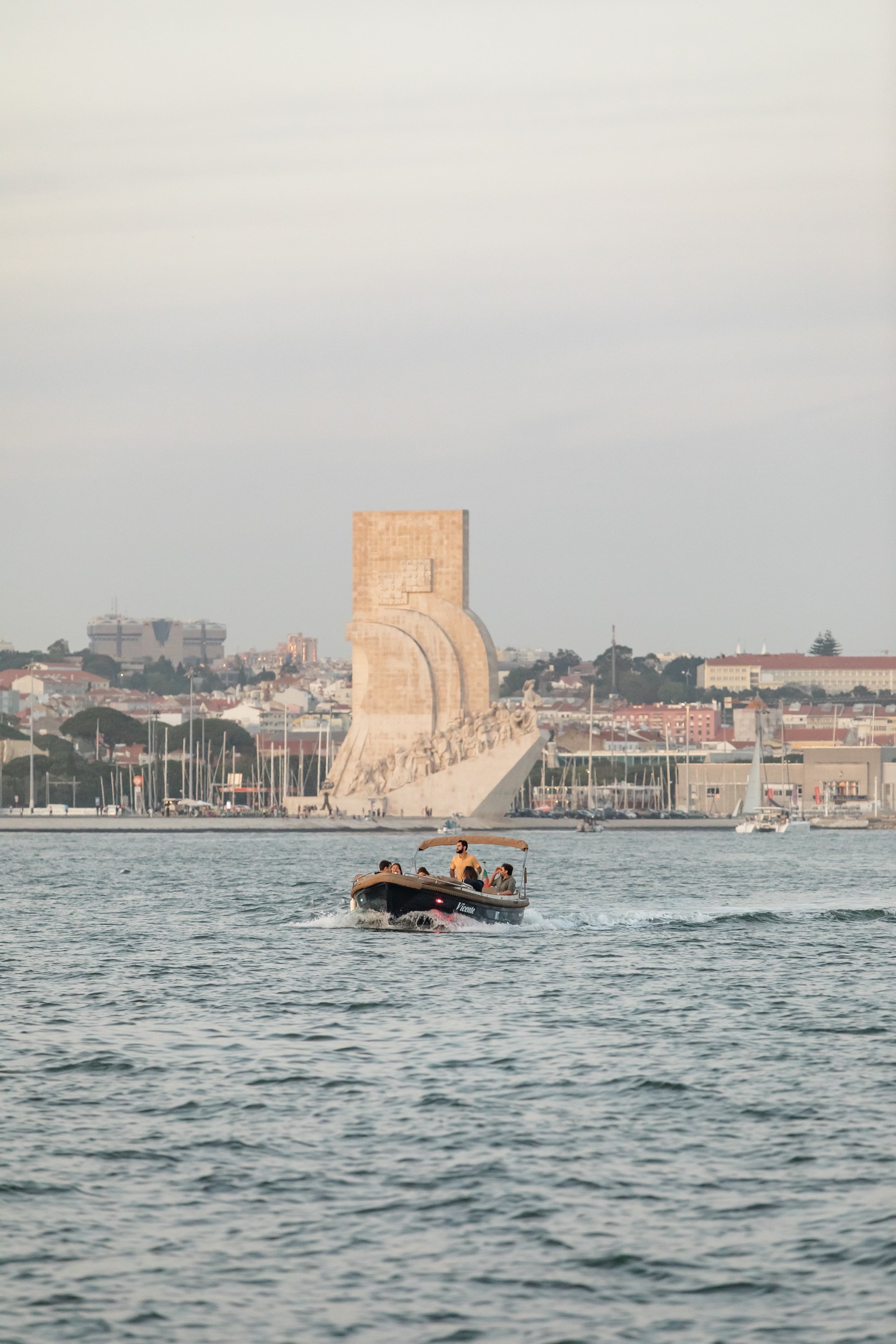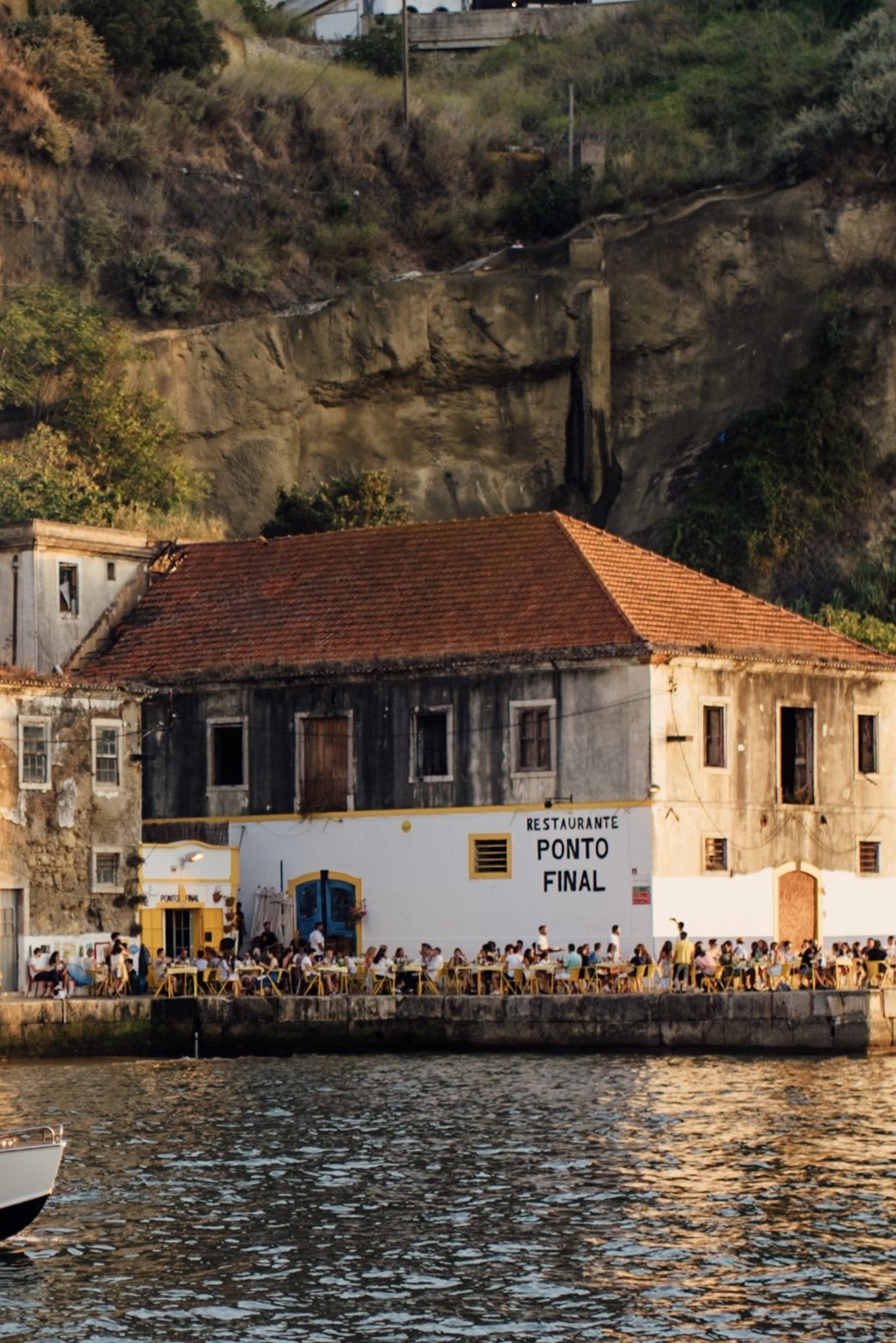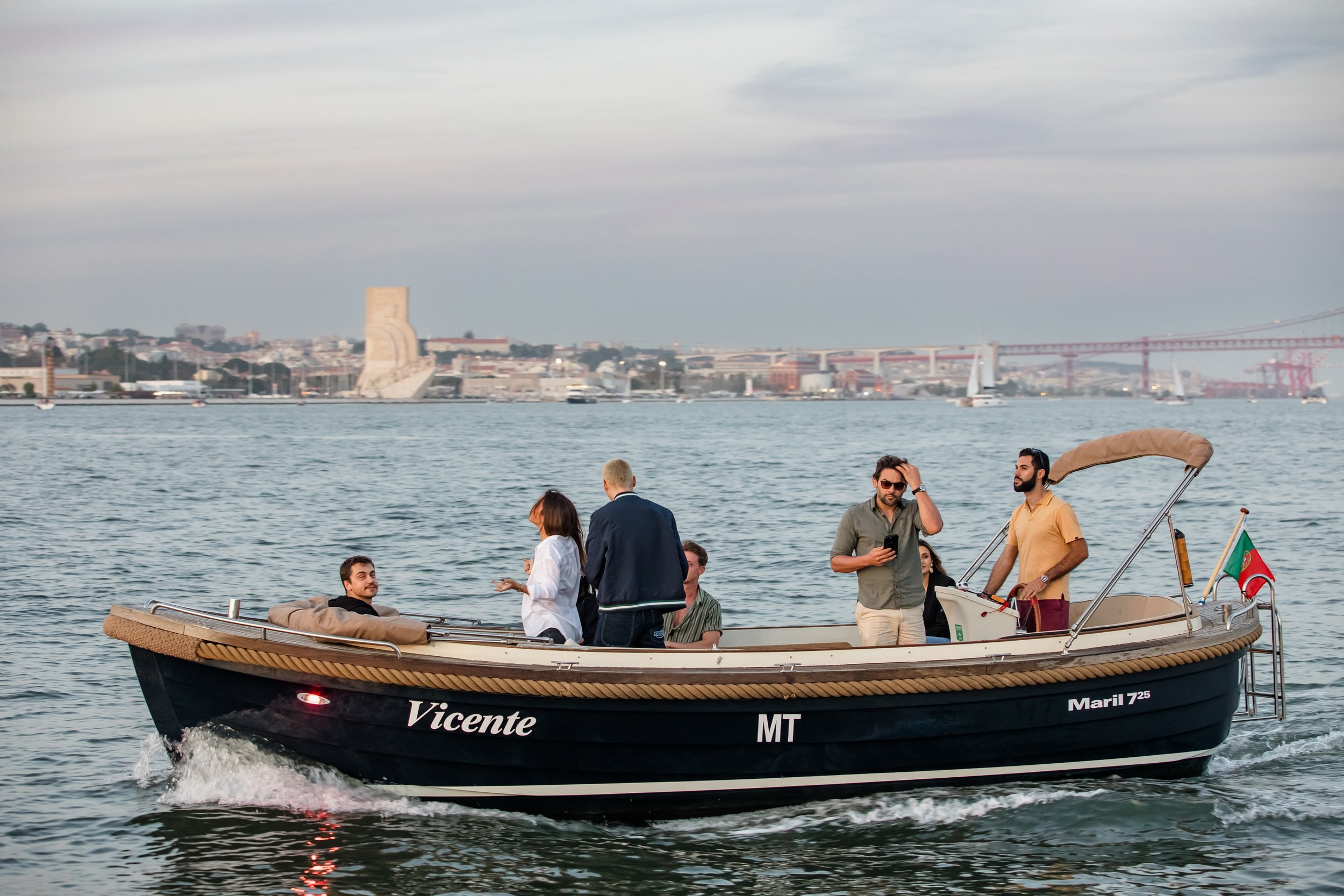Belém tour (1.5h)
Thanks to the compact size of our boat, you will enjoy an up-close and intimate view of all the sights.
The Tour includes space for up to 4 people.
You can add extra passengers (+ 20€ p.p.)
Our all-inclusive picnic basket (+60€)
Drop off at the beach near the restaurants Alfra-te ao Rio or Ponto Final (+50€)
Beverages are included.
Thanks to the compact size of our boat, you will enjoy an up-close and intimate view of all the sights.
The Tour includes space for up to 4 people.
You can add extra passengers (+ 20€ p.p.)
Our all-inclusive picnic basket (+60€)
Drop off at the beach near the restaurants Alfra-te ao Rio or Ponto Final (+50€)
Beverages are included.

Thanks to the compact size of our boat, you will enjoy an up-close and intimate view of all the sights.
The Tour includes space for up to 4 people.
You can add extra passengers (+ 20€ p.p.)
Our all-inclusive picnic basket (+60€)
Drop off at the beach near the restaurants Alfra-te ao Rio or Ponto Final (+50€)
Beverages are included.
During this tour, you will visit following:
Ponte de 25 de Abril, MAAT, Padrão dos descobrimentos, Torre de Belém, Fundacão Champalimaud, the beginning of the Atlantic Ocean, Lazareto, and the Santuário de Cristo Rei.
Below, you will find more information about each of them.
Ponte 25 de Abril
The Bridge of the 25th of April is an iconic suspension bridge spanning the Tejo River. Completed in 1966, it was originally named the Salazar Bridge but was renamed after the Carnation Revolution of April 25, 1974, which ended the dictatorship in Portugal. The bridge is often compared to the Golden Gate Bridge in San Francisco due to its similar appearance and reddish color. With a total length of over 2 kilometers, is it one of the longest suspension bridges in Europe. It serves as a vital transportation link between Lisbon and the south of Portugal, accommodating both, road and railway traffic.
MAAT
The museum of Art, Architecture and Technology (MAAT), in Lisbon is a contemporary museum known for its innovative architecture and exhibitions. Situated along the Tejo River in the historic Bélem district, the museum features a striking combination of modern and historic architecture. Its exhibitions explore the intersection of art, architecture, and technology, showcasing both, national and international contemporary works.
Padrão dos Descobrimentos
The Padrão dos Descobrimentos, translated as the Monument to the Discoveries, is a prominent monument located in the Belém district of Lisbon, Portugal. Built in 1960 to commemorate the 500th anniversary of the death of Henry the Navigator, a key figure in the Age of Discovery, the monument celebrates Portugal's rich maritime history and exploration achievements. Designed in the shape of a caravel, a type of ship used by Portuguese explorers during the Age of Discovery, the monument features prominent figures from Portugal's history, including explorers, navigators, cartographers, and other notable figures.
Torre de Belém
The Torre de Belém, or the Tower of Belém, is an iconic fortified tower, built in the early 16th century during the Age of Discovery. The tower served as a defensive structure guarding the entrance to the port of Lisbon and as a ceremonial gateway to the city. Its architectural style blends elements of Moorish, Gothic, and Manueline styles, featuring intricate stonework, ornate carvings, and maritime motifs. It has played a significant role in Portugal's maritime history, serving as a departure point for explorers during the Age of Discovery. Today, the Torre de Belém is a UNESCO World Heritage Site and one of the most visited landmarks in Lisbon.
Fundaçao Champalimaud
The Champalimaud Foundation is fascinating to see from the outside due to its striking architectural design. Its modern and innovative structure captivates observers with its sleek lines, unique shapes, and thoughtful use of materials. The building's exterior seamlessly blends contemporary aesthetics with functional elements, creating an eye-catching and visually appealing landmark along the Lisbon waterfront.
Lazareto
The Lazareto in Lisbon was historically a quarantine station used to isolate travelers suspected of carrying infectious diseases before they could enter the city. Located on an island in the Tejo River, it served as a crucial measure to prevent the spread of contagious illnesses such as the plague, cholera, and yellow fever. The Lazareto operated from the 15th to the 20th centuries and played a significant role in safeguarding public health during times of epidemic outbreaks. Today, the Lazareto serves as a reminder of Lisbon's history in disease control and quarantine practices.
Santuário de Cristo Rei
The Santuário de Cristo Rei, or Sanctuary of Christ the King, is a striking Catholic monument located in Almada, across the Tagus River from Lisbon, Portugal. Inspired by the Christ the Redeemer statue in Rio de Janeiro, Brazil, the monument was inaugurated in 1959 and stands atop a hill overlooking Lisbon. The towering statue of Christ with outstretched arms symbolizes peace and protection over the city.







